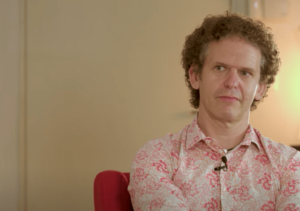COVID-19 - Acceptance and Commitment Therapy


Written and verified by the psychologist Cristina Roda Rivera
This guide for coping with COVID-19 is based on the book published by Russ Harris, The Happiness Trap. He’s a world-renowned promoter of acceptance and commitment therapy (ACT).
Firstly, Harris has become increasingly interested in the psychological characteristics of well-being from his professional position as a GP. In the end, this interest completely transformed his career. Now he works in two different but complementary roles: as a therapist and as a disseminator.
Russ Harris has conducted numerous workshops and provided ACT training for more than 30,000 healthcare professionals. Furthermore, The Happiness Trap is the world’s most widely translated ACT book and program. In fact, it’s sold approximately 600,000 copies and it’s been translated into more than 30 languages.
What Russ Harris wanted to synthesize is all the knowledge of acceptance and commitment therapy and apply it to coping with the coronavirus in a multi-step guide.
Acceptance and commitment therapy for coping with COVID-19
FACE COVID is the acronym for a set of practical steps to respond effectively to the coronavirus crisis using acceptance and commitment therapy (ACT) strategies and resources:
- F = Focus on what’s in your control.
- A = Acknowledge your thoughts and feelings.
- C = Come back into your body.
- E = Engage in what you’re doing.
- C = Committed action.
- O = Open up.
- V = Values.
- I = Identify resources.
- D = Disinfect and distance.
F – Focus on what’s under your control
COVID-19 can affect you in different ways. When faced with a crisis of any kind, fear and anxiety are inevitable. Thus, these are natural responses to challenging situations infused with danger and uncertainty.
And while it’s completely natural for people to get lost in such concerns, it isn’t helpful to do so because they’re not under your control.
A – Acknowledge your thoughts and feelings
Recognize what’s “showing up” inside of you: thoughts, feelings, emotions, memories, sensations, and impulses. Also, act as a curious scientist, observing what’s going on in your inner world. As you do this, it’s often helpful to put words into it.
Talk to yourself and say things such as “I’m noticing anxiety”, “Here’s the pain”, “There goes my worried mind”, or “I’m sad”. As you identify and acknowledge your thoughts and feelings, spend time paying attention to the state of your body.
C – Come back into your body
Go back and connect with your body in your own special way. You’re neither trying to get away, escape, avoid, nor distract yourself from what’s happening in your inner world. In addition, the goal is to be aware of your thoughts and feelings and connect with your body by actively moving it at the same time.
This way, you can gain as much control as possible over your physical actions, even if you can’t control your feelings. Thus, try to focus on what you can control.
E – Engage in what you’re doing as part of acceptance and commitment therapy
Refocus your attention to your activities. To do this, look around the room and pay attention to five objects. Then, listen to three or four sounds around you. Also, pay attention to what you can smell, taste, and feel.
C – Committed action
Committed action means effective action guided by your own core values. Any action you take must be really important to you.
Now, obviously, that includes all those measures to prevent the spread of the disease, such as frequent hand washing and social distancing. But in addition to those foundations of effective action, consider the following questions:
- What are the simple ways to take care of yourself, those who live with you, and those you can really help?
- Also, what kind of acts of love and support can you undertake?
- Can you say a few kind words to someone in distress?
- Do you have time to help someone? Either by cooking them a meal, holding their hand, or watching their children. Similarly, can you offer comfort to someone who’s ill?
- In most serious cases, can you take care of them and help them access medical assistance?
- If you spend a lot of time at home, what are the most effective ways to spend that time?
O – Open up
You’ve probably heard this message if you’ve ever traveled by airplane: “In the event of an emergency, please put on your oxygen mask before assisting others”. Well, think of your own wellness as that oxygen mask. You can only help others if you take care of yourself first.
V – Values
You can still stick to your principles in many different ways, even in the light of challenges. Thus, retake your values regarding kindness and care.
In which kind and caring ways can you deal with yourself while going through this situation? What are the kind words you can say to yourself? What kind of actions? Finally, how can you show kindness to those who are hurting around you?
Committed action must be guided by your core values. For instance, what kind of person do you want to be? How do you want to go through with it? How do you want to treat yourself and others?

I – Identify resources
Identify resources for help, assistance, support, and advice. This includes friends, family, neighbors, health professionals, and emergency services. In addition, keep the emergency phone numbers handy, including those for any psychological professional you may need.
An important part of this is finding a reliable and secure source of information for updates on the crisis and guidelines for responding to it. The World Health Organization’s website is the main source of such information.
D – Disinfect and distance, the last part of acceptance and commitment therapy
Remember to sanitize your hands regularly and practice as much social distancing as you possibly can. Do so for your sake and for those around you. Finally, keep in mind that this is about physical distancing, not emotional.
This is an important side of any committed action, so keep it in line with your values.
This text is provided for informational purposes only and does not replace consultation with a professional. If in doubt, consult your specialist.








